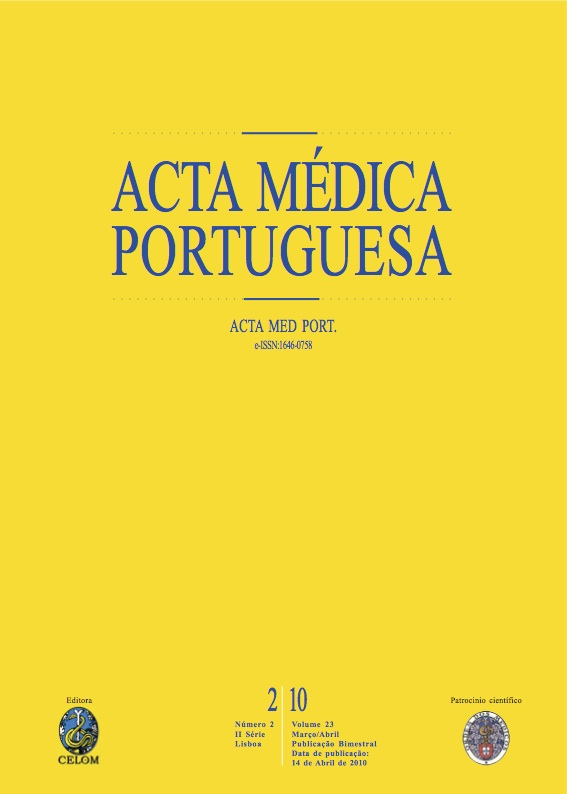Enteric nutrition and esophageal impactation: what relationship.
DOI:
https://doi.org/10.20344/amp.617Abstract
In the intensive care unit (ICU), enteral feeding is the method of choice for providing adequate nutrition in intubated patients. The oesophageal impactation (EI) by enteric nutrition (EN) results from solidification of the solution in esophagus lumen with formation of bezoar and although rare, is gradually becoming more common in clinical practice. In recent years some have been diagnosed cases of enteric nutrition impact, in an ICU. The authors seek to better understand their risk factors in order to prevent its occurrence.Retrospective study of patients with endoscopic diagnosis of EI, in ICU, over a period of 3 years.There were 1367 patients in the ICU, 1003 did EN and 9 had a EI diagnosis. Mean age - 66 years, 7 males, all of them with invasive ventilation support. Mean ICU stay - 32 days, and EI at 20th day, 12 days after started EN. In all the cases, EN is due to the solidification of the EN solution in esophagus. 7 patients had esophageal reflux risk factors: 4 previously known and 3 identified after EI diagnosis. The endoscopic treatment was successful in 7 patients.The EI frequency is low. The ICU average delay (32 days) in this series is twice the total of patients admitted during this period (14,27 days), reflecting the greater severity of the patients studied. Several cases could be implicated in the etiology of that clinical entity. Whenever risk factors are present it should be considered both the endoscopic introduction of nasojejunal tube and specific positioning strategies, to prevent reflux and gastric estasis. Medical and endoscopic treatment solved the majority of related cases that are available in the literature; however, in some specific cases it was necessary to use surgical treatment.Downloads
Downloads
How to Cite
Issue
Section
License
All the articles published in the AMP are open access and comply with the requirements of funding agencies or academic institutions. The AMP is governed by the terms of the Creative Commons ‘Attribution – Non-Commercial Use - (CC-BY-NC)’ license, regarding the use by third parties.
It is the author’s responsibility to obtain approval for the reproduction of figures, tables, etc. from other publications.
Upon acceptance of an article for publication, the authors will be asked to complete the ICMJE “Copyright Liability and Copyright Sharing Statement “(http://www.actamedicaportuguesa.com/info/AMP-NormasPublicacao.pdf) and the “Declaration of Potential Conflicts of Interest” (http:// www.icmje.org/conflicts-of-interest). An e-mail will be sent to the corresponding author to acknowledge receipt of the manuscript.
After publication, the authors are authorised to make their articles available in repositories of their institutions of origin, as long as they always mention where they were published and according to the Creative Commons license.









